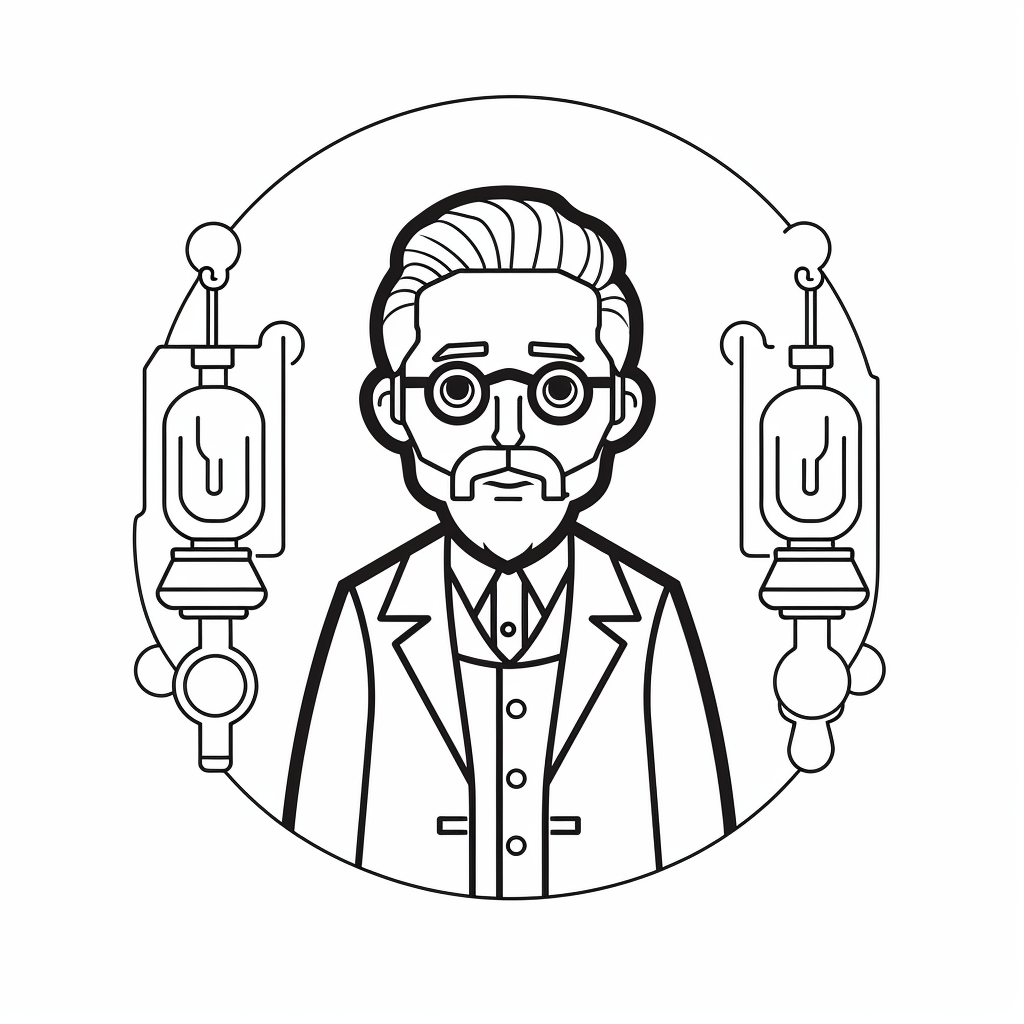Beyond The Blueprints: Unveiling The Ultimate Inventor List
The annals of human history are not merely a chronicle of events, but a vibrant tapestry woven with threads of innovation, curiosity, and relentless determination. At its heart lies the extraordinary impact of individuals who dared to dream beyond the known, to tinker with the ordinary, and to forge the extraordinary. This enduring legacy is best encapsulated by the very concept of an inventor list – a testament to the minds that have shaped our world, propelled us forward, and continue to inspire generations. From the simplest tools to the most complex technologies, every facet of our modern existence owes a debt to these visionary creators.
Understanding the essence of an inventor goes far beyond merely identifying someone who creates something new. It delves into the very spirit of problem-solving, the courage to challenge conventions, and the persistence to turn abstract ideas into tangible realities. This article aims to explore the profound significance of inventors, delving into their historical impact, the characteristics that define them, and the cutting-edge tools that empower today's innovators, ultimately painting a comprehensive picture of what it means to be part of an inventor list that truly matters.
Table of Contents
What Defines an Inventor?
At its core, an inventor is someone who creates or designs a new device, process, or method. Yet, this definition barely scratches the surface of the multifaceted role they play. Inventors are not just dreamers; they are meticulous problem-solvers, often driven by a deep understanding of unmet needs or inefficiencies. They observe the world, identify challenges, and then conceptualize novel solutions that can improve lives, streamline processes, or open up entirely new possibilities. The journey of an inventor is rarely linear; it's a winding path of trial and error, relentless experimentation, and an unwavering belief in their vision, even when faced with setbacks. Their contributions range from fundamental scientific breakthroughs to practical everyday objects, each adding another layer to the intricate fabric of human progress. To truly appreciate any inventor list, one must first grasp the profound dedication and intellectual rigor that underpins every single entry.
A Glimpse into History: Iconic Inventor Lists
Throughout history, certain names consistently appear on any comprehensive inventor list, symbolizing pivotal moments in human development. These individuals, often working with rudimentary tools and limited scientific understanding, laid the groundwork for the technological marvels we take for granted today. Consider the likes of:
- Johannes Gutenberg (c. 1400–1468): His invention of the movable type printing press revolutionized the dissemination of knowledge, making books accessible to the masses and fueling the Renaissance and Reformation.
- Leonardo da Vinci (1452–1519): More than just an artist, da Vinci was a prolific inventor whose notebooks contained designs for flying machines, war machines, and hydraulic systems, centuries ahead of their time.
- Thomas Edison (1847–1931): Known as "The Wizard of Menlo Park," Edison held over 1,000 patents. His most famous inventions include the practical incandescent light bulb, the phonograph, and the motion picture camera, which collectively transformed daily life and industries.
- Marie Curie (1867–1934): A pioneering physicist and chemist, Curie conducted groundbreaking research on radioactivity, discovering polonium and radium. Her work led to the development of X-rays in surgery and radiation therapy for cancer, making her a vital figure on any inventor list focused on scientific breakthroughs.
- Nikola Tesla (1856–1943): A brilliant and eccentric inventor, Tesla's work on alternating current (AC) electrical systems was fundamental to the modern electrical grid. He also contributed to the development of radio technology, remote control, and wireless communication.
- The Wright Brothers (Orville, 1871–1948; Wilbur, 1867–1912): Their successful flight of the first powered aircraft in 1903 ushered in the age of aviation, forever shrinking the world and changing transportation.
- Alan Turing (1912–1954): Often considered the father of theoretical computer science and artificial intelligence, Turing's work on algorithms and computation was foundational to the development of modern computers and breaking the Enigma code during WWII.
These are just a few examples from a vast and ever-growing inventor list. Their stories highlight not only individual brilliance but also the cumulative nature of innovation, where each invention builds upon the knowledge and discoveries of those who came before.
The Traits of a True Inventor
While the specific fields and eras of invention vary, certain common traits seem to bind together the individuals who make it onto a distinguished inventor list. These characteristics are not necessarily innate but can be cultivated and honed:
- Curiosity: A fundamental desire to understand how things work and a persistent questioning of the status quo.
- Observation: The ability to notice details and patterns that others might overlook, often leading to the identification of problems or opportunities.
- Problem-Solving Mindset: A natural inclination to break down complex issues into manageable parts and devise creative solutions.
- Persistence and Resilience: The capacity to endure countless failures, learn from mistakes, and continue working towards a goal despite setbacks. Edison famously said, "I have not failed. I've just found 10,000 ways that won't work."
- Creativity and Imagination: The ability to think outside the box, connect seemingly disparate ideas, and envision possibilities that don't yet exist.
- Technical Aptitude: A strong grasp of scientific principles, engineering concepts, or the specific domain in which they are inventing.
- Communication Skills: The capacity to articulate their ideas, collaborate with others, and effectively convey the value of their inventions.
- Adaptability: The willingness to pivot, refine, and even abandon ideas when new information or challenges arise.
These traits, combined with a passion for creation, are what transform a mere idea into a groundbreaking innovation that can earn a place on any significant inventor list.
From Idea to Reality: The Modern Inventor's Toolkit
The landscape of invention has evolved dramatically. While the core traits of inventors remain constant, the tools and methodologies they employ have undergone a profound transformation. Gone are the days when a workshop filled with hand tools and raw materials was sufficient. Today, the most impactful innovations often emerge from a sophisticated blend of digital design, simulation, and collaborative platforms. This shift is particularly evident in fields like mechanical engineering, product design, and industrial manufacturing, where precision, efficiency, and iterative development are paramount. The modern inventor list is increasingly populated by individuals and teams who leverage powerful software to bring their concepts to life.
The Power of 3D CAD Software
At the forefront of this technological revolution is 3D Computer-Aided Design (CAD) software. CAD tools allow engineers and designers to create virtual models of their products, components, and systems in a digital environment. This capability is revolutionary because it enables:
- Rapid Prototyping: Designers can quickly iterate on designs without the need for physical prototypes, saving time and resources.
- Precision and Accuracy: Digital models ensure exact measurements and tolerances, crucial for complex assemblies.
- Collaboration: Teams can work on the same design simultaneously, sharing feedback and making real-time adjustments.
- Visualization: High-quality renderings provide a clear understanding of the final product's appearance and functionality before manufacturing.
The ability to manipulate and test designs virtually has significantly accelerated the pace of innovation, allowing modern inventors to achieve in days what once took weeks or months. This efficiency is a game-changer for anyone aspiring to add their name to a future inventor list.
Autodesk Inventor: Empowering Product Design
Among the leading solutions in the 3D CAD landscape is Autodesk Inventor. This powerful software suite is specifically tailored to meet the rigorous demands of mechanical design and product development. For engineers and product designers, Autodesk Inventor is more than just a drawing tool; it's a comprehensive ecosystem for innovation. As the provided data indicates, "Autodesk inventor software provides engineers with a complete set of powerful mechanical design solutions for 3d modeling, simulation, visualization, and documentation." This means inventors can:
- Develop detailed 3D models: "Inventor is a 3d cad modeling software for product and mechanical designers," allowing for intricate part and assembly design.
- Explore design variations: The software supports "a powerful blend of parametric, direct, freeform," and other modeling techniques, giving designers immense flexibility.
- Streamline workflows: From initial concept to final documentation, Inventor provides integrated tools that enhance efficiency.
The software's versatility means it "supports industrial design, simulation and documentation," making it an indispensable asset for anyone serious about bringing a new product to market. For those looking to explore its capabilities, "Download a free trial of autodesk inventor 3d cad software" is an excellent starting point to "Discover how inventor supports product design, rendering, and simulation."
Simulation and Visualization: Seeing the Future
One of the most critical aspects of modern invention, particularly in engineering, is the ability to predict how a design will perform under real-world conditions before a single physical prototype is built. This is where Autodesk Inventor truly shines. "Learn about inventor modeling, design, simulation, and rendering features," highlights the software's advanced capabilities in this area. Engineers can create "virtual representations" of their final products, allowing them to:
- Test structural integrity: Simulate forces, stresses, and strains to ensure parts won't fail.
- Analyze motion: Understand how moving parts interact and identify potential clashes or inefficiencies.
- Optimize performance: Make data-driven decisions to improve functionality, durability, and cost-effectiveness.
- Visualize aesthetics: High-quality rendering helps in marketing and presentation, showcasing the product's appearance.
This predictive power significantly reduces development costs and time, minimizing the risks associated with physical prototyping. It allows inventors to refine their creations with unprecedented accuracy, ensuring that when a product finally moves to manufacturing, it's as close to perfect as possible. This meticulous process is what elevates a good idea to a commercially viable invention, securing its place on a valuable inventor list.
Learning and Support for Aspiring Inventors
For those eager to join the ranks of modern innovators, access to learning resources is crucial. Autodesk understands this need, offering extensive support for its users. "Learn how to use autodesk's mechanical design and 3d cad software with free inventor tutorials and learning resources," is a testament to their commitment to empowering the next generation of inventors. These resources range from beginner guides to advanced techniques, ensuring that users can harness the full power of the software. Furthermore, for those ready to commit, "Buy a subscription from the official autodesk store or an autodesk partner," ensures access to the latest features, updates, and professional support, providing a solid foundation for any serious design endeavor. This accessibility to powerful tools and knowledge is democratizing invention, allowing more individuals to contribute to the ever-growing inventor list.
The Economic and Societal Impact of Invention
The contributions of individuals on an inventor list extend far beyond the mere creation of new objects; they are fundamental drivers of economic growth, job creation, and societal advancement. Each significant invention often spawns entirely new industries, markets, and employment opportunities. For instance, the invention of the automobile led to the automotive industry, road construction, gas stations, and countless related businesses. The development of the internet and personal computers birthed the entire digital economy, transforming communication, commerce, and entertainment globally.
Inventions also address critical societal challenges. Medical breakthroughs, energy solutions, and agricultural innovations directly improve quality of life, extend lifespans, and ensure sustainability. The efficiency gains from software like Autodesk Inventor, for example, not only accelerate product development but also reduce waste, optimize resource usage, and enable more sustainable manufacturing practices. The economic ripple effect of a successful invention can be immense, generating wealth, attracting investment, and enhancing a nation's competitive edge on the global stage. Therefore, curating and celebrating an inventor list is not just about historical recognition; it's about acknowledging the engines of progress that continue to shape our collective future.
The Future of Invention: AI, Robotics, and Beyond
As we look to the horizon, the future of invention promises to be even more dynamic and transformative. Emerging technologies like Artificial Intelligence (AI), robotics, biotechnology, and advanced materials are not just new fields of invention but also powerful tools that will accelerate the invention process itself. AI, for instance, is already being used in generative design, where algorithms can explore millions of design possibilities based on specified parameters, potentially leading to novel and optimized solutions that human designers might not conceive. Robotics is revolutionizing manufacturing and automation, enabling precision and scale previously unimaginable.
The next generation of inventors will likely be interdisciplinary, combining expertise from various fields to tackle complex global challenges like climate change, disease eradication, and sustainable energy. The emphasis will shift from isolated breakthroughs to interconnected systems and holistic solutions. Software like Autodesk Inventor will continue to evolve, integrating more AI-driven features, cloud collaboration, and virtual reality capabilities, further blurring the lines between digital design and physical reality. The inventor list of the future will undoubtedly feature individuals who harness these advanced technologies to push the boundaries of what's possible, creating innovations that address humanity's grandest challenges.
Cultivating the Next Generation of Inventors
To ensure a continuous flow of innovation and to populate future inventor lists, fostering a culture of creativity and problem-solving from a young age is paramount. This involves:
- STEM Education: Strengthening science, technology, engineering, and mathematics education in schools to build foundational knowledge.
- Hands-on Learning: Providing opportunities for practical experimentation, building, and tinkering, much like early inventors did.
- Mentorship: Connecting aspiring inventors with experienced professionals who can guide and inspire them.
- Access to Tools: Ensuring that students and budding innovators have access to modern design and simulation software, like free trials and educational licenses for Autodesk Inventor, to turn their ideas into virtual realities.
- Encouraging Failure: Creating environments where experimentation and even failure are seen as crucial steps in the learning and invention process.
- Interdisciplinary Collaboration: Promoting teamwork across different fields to tackle complex problems.
By nurturing these elements, we can empower individuals to think critically, innovate fearlessly, and contribute meaningfully to the world. The goal is not just to create more entries on an inventor list, but to cultivate a society where innovation is a pervasive force, driving progress and creating a better future for all.
Conclusion
The concept of an inventor list is far more than a historical record; it is a living testament to human ingenuity, perseverance, and the relentless pursuit of progress. From the transformative impact of the printing press to the intricate designs created with modern 3D CAD software like Autodesk Inventor, inventors have consistently reshaped our world, driven economic growth, and solved pressing societal challenges. Their journey, often marked by countless trials and errors, is a powerful reminder that innovation is born from a blend of curiosity, resilience, and a deep understanding of needs.
As we navigate an increasingly complex future, the role of inventors becomes even more critical. By embracing advanced tools, fostering interdisciplinary collaboration, and nurturing the spirit of innovation in future generations, we can ensure that the inventor list continues to grow, filled with visionaries who will lead us towards a more sustainable, efficient, and inspiring tomorrow. What inventions do you believe have had the most profound impact on humanity? Share your thoughts and favorite inventors in the comments below, and perhaps explore the world of modern design tools to see how you might contribute to the next wave of innovation!

MIT App Inventor Community - The App Inventor Community

Sorting the list in the list view - MIT App Inventor Help - MIT App

Creative Inventor - Coloring Page